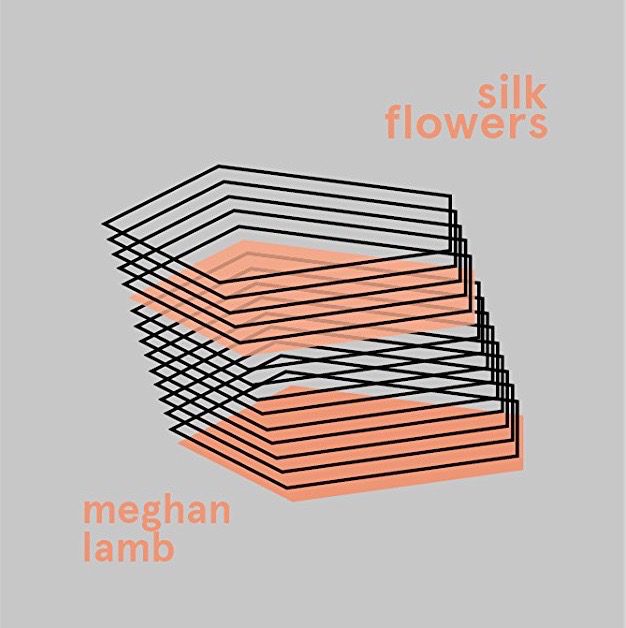
Author Meghan Lamb‘s new novel, Silk Flowers (Birds of Lace, March 2017), is a book that cuts to the core of disturbance. In it, a woman is struck by an inexplicable and undiagnosable illness that renders her immobile and takes away her ability to speak. Her husband must become her caretaker, living with a woman who is and is not his wife, newly alone but living still in an unsettling domestic companionship that is uncannily unchanged. For both husband and wife, memory haunts and disquiet seeps in and spreads.
Here, we discuss writing about illness and the body, traversing boundaries of fiction and memoir, and what it’s like to return to and revise a text written by your younger self.
Meghan Lamb is from Chicago, Illinois. She holds an MFA from Washington University in St. Louis, where she served as an editorial assistant for Dorothy, a publishing project. In addition to Silk Flowers she is the author of the novella Sacramento (Solar Luxuriance, 2014). Her fictions and essays can be found in DIAGRAM, Redivider, Nat.Brut, The Collagist, The Rumpus, Passages North, PANK, and elsewhere.
***
The Rumpus: As the biographical note for Silk Flowers states, you wrote the novel during a nine-month period wherein your left leg mysteriously stopped working. The female protagonist of the novel, identified as Wife in the opening list of characters, also suffers from a mysterious illness. The wife’s illness is not yours—you eventually received a diagnosis (peroneal neuropathy) and your leg recovered, while the wife remains undiagnosed and her illness eventually consumes her. But the biographical note does gesture toward an element of memoir in the novel. Were you consciously adhering to or sidestepping any genre boundaries as you wrote?
Meghan Lamb: Silk Flowers definitely gestures toward memoir in the sense that it incorporates some of the strange, estranging physicalities of my own experience, electric pains, reverberating auras, stuff that’s difficult to describe, let alone explain, because we don’t really have the language for it. But even more so than my own, direct experience, the book revolves around my anxiety of imagined, potential experiences, around questions I couldn’t help but ask myself when the neuropathy was an active force in my body. Will this get worse? Will my marriage dissolve, if this gets worse? Will I get to the point where I can’t communicate something that needs to be communicated?
That last question was constantly on my mind, as someone who’d worked as a Certified Nursing Assistant for the elderly and a caregiver for individuals with disabilities. I’d worked with people in the late stages of Tay-Sachs, Alzheimer’s, Multiple Sclerosis, Huntington’s, ALS (Lou Gehrig’s Disease). I was intimately acquainted with the effects of these degenerative disorders, not only on the people who experienced them, but the partners and family members who absorbed them by proxy. This shadowy process of absorption—the desire to communicate through the separateness of bodies, through the fog of illness—is something I really longed to capture in Silk Flowers.
So, in that sense, this book is all about “boundaries,” observing them, avoiding them, attempting (and failing) to traverse them, and the genre of “memoir” (the specter of a human being’s precisely articulated story) is certainly one of those critical boundaries.
Rumpus: Could you talk about the actual process of writing the book?
Lamb: To begin with, I wrote this book from the spaces where I spent almost the majority of those nine months, on the couch and in my bed. It was a bizarre liminal stage of my life (even though, at the time, I had no idea it was liminal) where I had to quit my physically demanding caregiver jobs and work from home. My writing sustained me in a very literal way, in the sense that it was literally the only thing I was doing outside of eating, sleeping, mundane couch-based work tasks, and being ill.
Maybe that’s too simplistic of an image to offer. I was able to walk around a bit after a few months, when I had a leg brace made for me, but the plastic rim of the brace curved right into the damaged nerve, and if I walked too far, it made things worse. So, in that sense, every walk I took felt like a shady bargain with my own body, trading one need for another
Writing the book felt a lot like that, too.
The editing process of this book was equally unusual, but ultimately befitting its interests. To make a long story short, it changed hands (between editors/publishers) and that was a fairly redacted process. By the time I sat down to re-edit the text of Silk Flowers, five years had gone by. I was no longer ill. I’d gone through a divorce. I’d remarried. I’d lived in four separate cities.
It was an amazing experience, re-visiting and editing these words I’d written in an altered state at the age of twenty-four, a rare opportunity to converse with the thoughts and the language of a past self. There were plenty of moments where my own voice and perceptions were recognizable to me as myself, but there were also a great number of moments that made me think, W.T.F.? What version of me wrote this? But in a book that’s so invested in the experience of disassociation from yourself, from your own body…I think that sensation was really generative, helped its performative tensions to resonate more authentically (at least from my own admittedly distorted vantage!)
Rumpus: Silk Flowers is beautiful, lush, and sensually written, but it’s also pretty frightening. We watch the wife’s body and mind succumb to her illness, and both she and her husband, in interweaving sections, are haunted by memories of loss. I’m curious to know if you consider Silk Flowers to be a work of horror, and more generally what your relationship to horror is?
Lamb: Many of the women writers I admire—the Brontë sisters, Edith Wharton, Muriel Spark, Daphne du Maurier, Shirley Jackson, Anna Kavan, Joyce Carol Oates—spent much of their careers skirting along the margins of horror, masterfully examining the dark edges of human experience. Or, maybe more to the point, a lot of their writing is concerned with deconstructing the elements of horror fiction, slyly gesturing to the reader’s perception even amidst eerily embodied sensory description. That peculiar tension between embodied physical detail and the reader’s disembodied observance was definitely something I was interested in channeling with Silk Flowers. I wanted to enmesh the unsettlingly visceral with the arguably even more unsettling sensation of looking on and watching.
I wanted Silk Flowers to feel, at turns, like a play, or even a “bad” horror film, and there’s a whole other book I could write about my relationship to the genre as it pertains to film and theater. Specifically, the erotics of sparse, stagey dialogue, how it weirdly augments the horror of an overwhelming situation. A person repeatedly shouting the stupidest, most obvious statement they could be shouting. Oh no! What’s happening? Look! What! Help! A name called out, again and again, until that name—the person attached to it—is defamiliarized.
That defamiliarization is what speaks to me the most in horror, which is, by its most basic definition, “an intense feeling of shock or disgust.” What could be more horrifying than an unknown force manifesting itself within your own body, or the body of someone you feel you should be close to? Even more horrifyingly, this is something almost everyone necessarily experiences at some point in their lives (or knows—at least on some level—they have yet to experience): the absence of a partner or family member who is nevertheless, still, physically there.
Rumpus: I’m always struck by how you write the body. Your characters, in some ways, are so embodied, so acutely aware of their own sensations: “Her skin rises and falls, a fluid shimmer. It feels almost pleasant, now a part of her, this energy, familiar as her heart, her lungs, her liver.” But there’s a way, too, in which your characters feel entirely disembodied and absent from themselves, like people observing a performance of themselves from the outside. This seems especially true for the wife in Silk Flowers, who must experience and also bear witness to her own body’s illness. Would you call it an othering of the self? How do you navigate your characters’ relationships to their bodies as you write?
Lamb: I would absolutely call it “an othering of the self.” Thank you for giving me those words! And I wish I had a more satisfying answer for your amazing question, namely because this is something I spend a lot of time thinking about (though not in such precisely expressed terms). For now, all I really have to offer is my desire to write around absence, these gauzy vacancies—“a fluid shimmer”—meant to serve as a kind of shorthand for the rifts into which our words fall, these weird dead zones of language. And I can only imagine I navigate these dead zones in the ways everyone else does, by circling around them, gazing fearfully.
Rumpus: What are you working on now?
Lamb: I am working on a nearly finished full-length short story collection called Significant Others that (fittingly enough) revolves around the aforementioned concept of “othering of the self” (specifically, the collection explores this self-othering as an unspoken or unspeakable tension within relationships.) I am also working with Spork Press on a soon-to-be-published illustrated novella called All of Your Most Private Places that features call girls, the desert, an unnamed city, and an atomic museum based around the weird mannequin houses used in the 1950s and 1960s on the Nevada Test Site. I’m about halfway finished writing an art book entitled New Years Eve at the Pine Burr Inn and a novel entitled Failure to Thrive, both which explore life in the Pennsylvania coal region from very different lenses.
And I’m always working on numerous shorter projects: short stories, essays, reviews, etc. Blind Spot by Harold Abramowitz, In a Dream, I Dance by Myself, and I Collapse by Carolyn Zaikowski, The Sky Isn’t Blue by Janice Lee, Dust Bunny City by Bud Smith, The Sarah Book by Scott McClanahan, and The Disintegrations by Alistair McCartney are some of the wonderful books on my roster (which is to say, everyone else should also read them!)
***
Author photograph © Jason Pappariella





